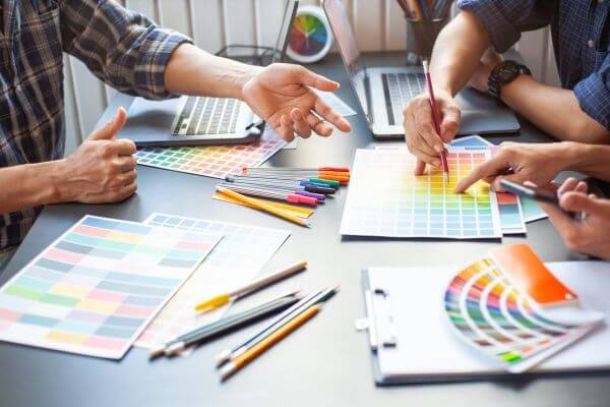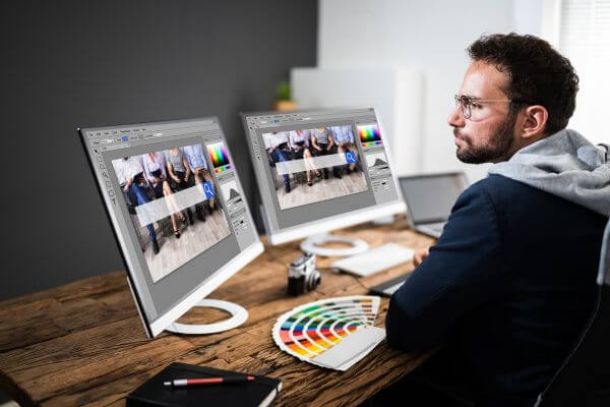The Importance of Space in Design: Tips for a Balanced Layout
The Importance of Space in Design: Tips for a Balanced Layout
Introduction: Space, often referred to as negative space or white space, is a fundamental element in design that often goes unnoticed. However, it plays a critical role in creating a balanced and visually appealing layout. In this article, we will explore the importance of space in design and provide valuable tips for achieving a well-balanced and harmonious design layout.
Understanding Space in Design
Space refers to the area around and between design elements, including text, images, and other graphical elements. It can be categorized into two types: positive space (occupied by elements) and negative space (empty or unoccupied areas). Both types of space are essential in creating a visually engaging design.
Negative space provides breathing room, clarity, and visual hierarchy, allowing the viewer’s eyes to rest and focus on the main elements. It enhances readability, improves comprehension, and creates a sense of balance and harmony in the overall design.
Establishing Visual Hierarchy
Space is crucial in establishing a clear visual hierarchy within a design layout. By strategically allocating space around important elements, such as headings or key messages, you can guide the viewer’s attention and emphasize their significance.
For example, increasing the space around a headline can make it stand out and grab attention. Similarly, adding ample space between paragraphs or sections helps readers navigate through the content more easily and improves overall readability.
Enhancing Clarity and Readability
Appropriate spacing between text and other design elements significantly enhances clarity and readability. Insufficient space can make a design feel cluttered and overwhelming, leading to a poor user experience. On the other hand, generous spacing creates a more organized and inviting layout, making it easier for viewers to engage with the content.
]
When it comes to typography, proper line spacing (leading) and letter spacing (tracking or kerning) contribute to improved legibility. Sufficient spacing between lines and letters prevents overcrowding and ensures that text is easily readable, even at smaller font sizes.
Achieving Balance and Harmony
Space plays a vital role in achieving visual balance and harmony in a design layout. Balance refers to the distribution of visual weight within a composition. It can be symmetrical, where elements are evenly distributed on both sides of a central axis, or asymmetrical, where elements of varying sizes and weights are strategically placed to create a balanced composition.
Space allows for the proper placement of elements, giving them room to breathe and interact with one another. Balancing positive and negative space ensures that the design feels harmonious and visually appealing to the viewer.
Emphasizing Minimalism
Negative space is a key component of minimalist design. Embracing minimalism involves simplifying the design by eliminating unnecessary elements and focusing on the essentials. By incorporating ample negative space, you can create a clean and uncluttered design that allows the core elements to shine.
Minimalistic designs not only have a modern and sophisticated aesthetic but also convey a sense of elegance and sophistication. Negative space allows the design to make a powerful impact by emphasizing what truly matters.
Creating a Sense of Atmosphere
Space can help create a specific atmosphere or mood within a design. The amount and arrangement of space contribute to the overall tone and feeling conveyed by the design. Sparse, open space can create a sense of tranquility, while densely packed elements can evoke a sense of energy or excitement.
Consider the emotional impact you want your design to have and use space strategically to enhance that feeling. Experiment with different spacing options to create the desired atmosphere that aligns with the design’s purpose and message.
Testing and Iterating
As with any design element, testing and iteration are essential for achieving the perfect balance of space in your layout. Step back and take a fresh look at your design to assess its overall composition and use of space. Seek feedback from colleagues or other designers to gain different perspectives and insights.
Make necessary adjustments based on the feedback received, such as increasing or decreasing spacing, refining typography, or repositioning elements. Iteration and refinement are key to achieving a harmonious and visually appealing design.
Utilizing Space for Branding
Space can play a vital role in branding by helping to establish a distinct and recognizable visual identity. Consistent use of space in various brand materials, such as advertisements, packaging, and websites, creates a cohesive and memorable brand experience.
By defining consistent margins, padding, and spacing guidelines, you ensure that your brand maintains a cohesive look and feel across different touchpoints. This consistency not only reinforces brand recognition but also reflects a sense of professionalism and attention to detail.
Strategic Use of White Space
White space, or negative space, is a powerful tool in design that refers to the areas left intentionally empty. It can be a solid color or the absence of visual elements. Strategic use of white space can enhance the overall composition and impact of a design.
White space allows elements to stand out and breathe, drawing the viewer’s attention to the focal point of the design. It helps reduce visual clutter, improving legibility and comprehension. By balancing positive and negative space, you can create a design that feels well-organized and visually pleasing.
Conserving Space in Responsive Design
In the era of mobile and responsive design, space becomes even more critical. With limited screen real estate on mobile devices, conserving space is essential for ensuring a seamless user experience.
When designing for responsive layouts, consider how space will adapt to different screen sizes and orientations. Use media queries to adjust margins, padding, and font sizes to maintain optimal readability and visual balance across devices. Conserving space in responsive design ensures that your content remains accessible and engaging, regardless of the device being used.
Experimenting with Different Spatial Relationships
Space offers a playground for experimentation and creativity in design. By manipulating the spatial relationships between elements, you can create unique and dynamic compositions.
Try exploring different spacing options, such as overlapping elements or asymmetric arrangements, to add visual interest and energy to your design. Breaking away from traditional grid structures and exploring unconventional spatial relationships can result in captivating and memorable designs.
Creating Breathing Room
Negative space provides breathing room within a design, allowing elements to be perceived individually and reducing visual noise. It creates a sense of balance and calmness, making the design more inviting and pleasant to engage with.
By incorporating ample negative space around complex or detailed elements, you give them room to shine and command attention. This can be particularly effective in photography, where negative space can highlight the subject and evoke emotions.
Balancing Space with Content
When designing layouts, it’s important to strike the right balance between space and content. Overcrowding a design with excessive elements or text can overwhelm the viewer and dilute the impact of the message.
Prioritize content and determine what elements are essential for communicating the desired message. Allow space to enhance the content’s clarity and impact. Consider using grids or aligning elements to maintain a visually organized and balanced layout.
Paying Attention to Microspacing
In addition to macrospacing, which refers to the overall arrangement of elements, paying attention to microspacing is crucial for creating a polished and refined design. Microspacing refers to the small spaces between individual letters, lines, or graphical details.
Proper microspacing enhances legibility and creates a visually harmonious design. Adjusting letter spacing (kerning) or line spacing (leading) can significantly improve the overall appearance and readability of typography. Paying attention to these small details demonstrates a high level of craftsmanship and elevates the overall quality of your design.
Evoking Emotion through Space
Space can evoke specific emotions and set the tone for a design. Dense and tightly packed elements can create a sense of excitement or energy, while spacious and open layouts can evoke tranquility or elegance.
Consider the emotional response you want to elicit from your audience and use space intentionally to support that emotion. Experiment with different spatial arrangements and sizes to create the desired mood in your design.
Embracing Minimalism
Minimalistic design relies heavily on the use of space to create clean, uncluttered visuals. By eliminating unnecessary elements and using ample white space, minimalistic design achieves a sense of simplicity and elegance.
Embrace minimalism by stripping away non-essential elements and focusing on the core message or visual. The strategic use of space in minimalistic design allows the remaining elements to have maximum impact.
Conclusion
Space is a fundamental element in design that significantly influences the balance, legibility, and overall impact of a layout. By understanding the importance of space and applying these tips for achieving a well-balanced design, you can create visually captivating designs that effectively communicate your message and engage your audience.
Remember, space is not merely an empty area but an active and intentional design element. Embrace its power, experiment with different spatial relationships, and utilize it strategically to create designs that leave a lasting impression.


